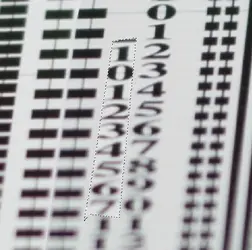theraven871
TPF Noob!
- Joined
- Jun 21, 2013
- Messages
- 82
- Reaction score
- 14
- Location
- United States
- Can others edit my Photos
- Photos NOT OK to edit
I compared the same photograph taken with two different cameras (sensor sizes). A comparison that would be interesting and meaningful to a photographer.
You can't take the same photograph with a 50mm lens on a FF camera and also a cropped sensor camera. So if you compare an apple with an orange and proclaim that they're different what was the point of your comparison? My niece would say, "duuuuhhhhhh."
Joe
It's only a comparison that would be interesting to some photographers. Have you noticed we are all talking about different parts of the same thing.
There does seem to be a lot of cross talk going on here. My concern is with this error stated in post #13: "I have full frame and APS-C bodies, and prime lenses, so I got out a tripod, a target and a tape measure. Sensor size has no effect on DOF."
I posted a correction in post #43.
Frequently we make brief statements that are true in certain circumstances, but don't really illuminate sufficiently to permit the information to be used/understood in other situations.
Bokeh comes mostly from focal length, aperture, and distance to subject/distance to background. If a smaller/larger sensor allows you to move with respect to your subject/background, that movement will be what affects the bokeh. Put a 50 mm f/1.8 lens on a crop body, or on a full frame body, and you will be able to go and shoot with the same ISO, same shutter speed, and same aperture, and you will get an image with the same exposure, but different framing. If you want more bokeh, get a full frame body because for any given focal length, you can stand closer and still fit your subject in.
Moving the camera alters perspective and produces a different photograph -- not a valid comparison.
Get a medium format camera because the much larger sensor will let you stand even closer! Standing closer is the part that will deliver more bokeh. Same lens, same distance to subject, same aperture, same DOF, different framing if you have different sensor sizes.
Moving the camera alters perspective and produces a different photograph -- not a valid comparison.
Joe
Joe,
I agree with you.
If you take a 50mm 1.8 lens on a full frame vs crop sensor, you'll need to get CLOSER with the full frame to keep the same composition.
This, of course, will also affect your depth of field. So its not an accurate test.









![[No title]](/data/xfmg/thumbnail/37/37604-7ad625e983f92f880eb65a264eeef5e4.jpg?1734170732)






![[No title]](/data/xfmg/thumbnail/31/31758-546fe80b548bda08983001811ab5be60.jpg?1734160480)

